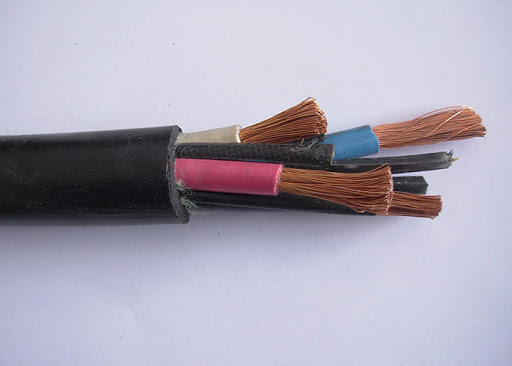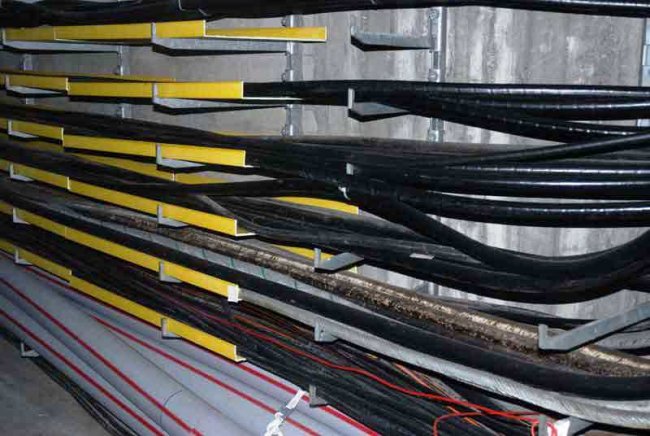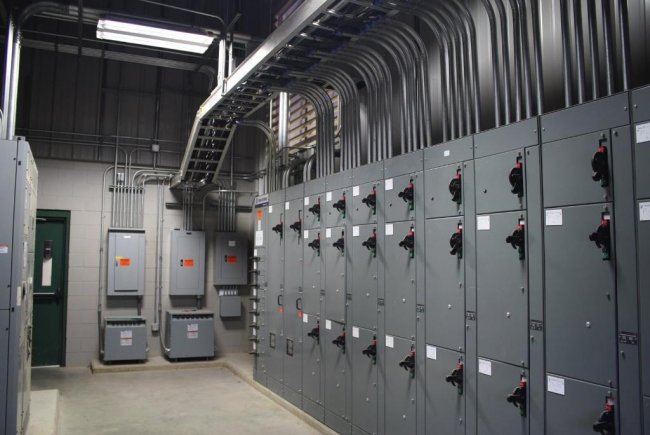Aging of rubber insulation of wires and cables
Accelerated aging of the rubber samples during heating is much slower for the heat-resistant rubber than for the sulfur-containing rubber. The commonly used method of aging in a thermostat does not produce a noticeable change in the mechanical properties of heat-resistant rubber even after several months.
Increasing the temperature at which artificial aging is carried out from 70 ° C for sulfur rubbers to 120 ° C for heat-resistant rubbers significantly changes the aging conditions and therefore makes it difficult to compare the life of conventional and heat-resistant rubbers based on the results of aging tests.

The service life of rubber insulation is usually characterized by a curve depicted in a coordinate system where time is delayed along the abscissa and quality loss along the ordinate. This curve gives, at the test temperature, the time required for the insulating material to lose its original quality, such as breaking strength or elastic product, to a predetermined predetermined limit.
An essential issue in determining the temperature life curve of an insulating material is the establishment of the main criterion — the loss of quality of the material. This criterion may be primarily the mechanical properties of the insulating material, for example tensile strength and elongation after rupture, as well as other signs of weight loss, drying, charring, etc.).
For rubber, the tensile strength and elongation after fracture are taken as the main characteristics characterizing the quality of this material, and sometimes the product of these indicators (product of elasticity) is also taken. The criterion characterizing the loss of basic quality is not a comparison of mechanical properties, but their change during aging.
The lifetime of an insulating material as a function of temperature can be represented by a certain exponential factor. For the majority of fibrous insulation materials (yarns, paper) according to literature data each increase in temperature by 10 ° C reduces the service life of the material by 2 times.
Now you need to set the limit temperature at which the quality of the insulating material is lost for a more or less long period.
To estimate the aging of machine insulation, this period is sometimes taken as 2 years.
For modern wires and cables, the service life of the rubber insulation, even at elevated temperatures, for example at 70 °, is measured in years and is therefore very difficult to directly determine.
Determining the service life of a cable or wire operating under natural conditions, according to the data of accelerated aging at elevated temperature (90 — 120 °), is completely impossible, since the loss of the quality of the material of the insulating layer at high temperature is faster. , while at a lower temperature the decay of the quality characteristic becomes noticeable only after a certain period of time, sometimes measured in tens and hundreds of days. The longer this period of time, the lower the aging temperature.
Sometimes there is even a slight increase in the mechanical properties of rubber in the first days of aging at a relatively low temperature.
If the thermal aging of rubber insulation is mainly determined by the process of oxidation of rubber due to atmospheric oxygen, then the aging of elastomers is mainly determined by the evaporation of plasticizers, which is associated with an increase in brittleness and a decrease in mechanical characteristics.
In addition to the heat aging of plastics used in the production of cables, the process of light aging is of great importance.
The most complete testing of wires with plastic and rubber insulation, as well as the insulating material itself used for the production of wire or cable, is carried out in a special installation in which the insulation is exposed simultaneously to heat (thermal aging) and the light of an ultraviolet lamp ( light aging) in conditions of high humidity and accelerated air circulation (matrix hardness test), which is now increasingly displacing thermal aging, as it more correctly represents the conditions in which the insulating material is found.


